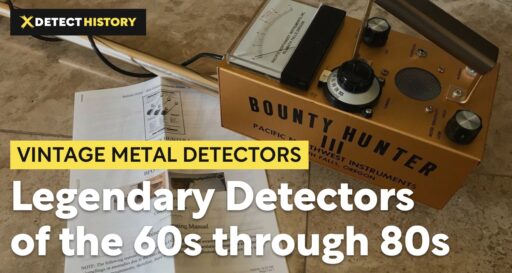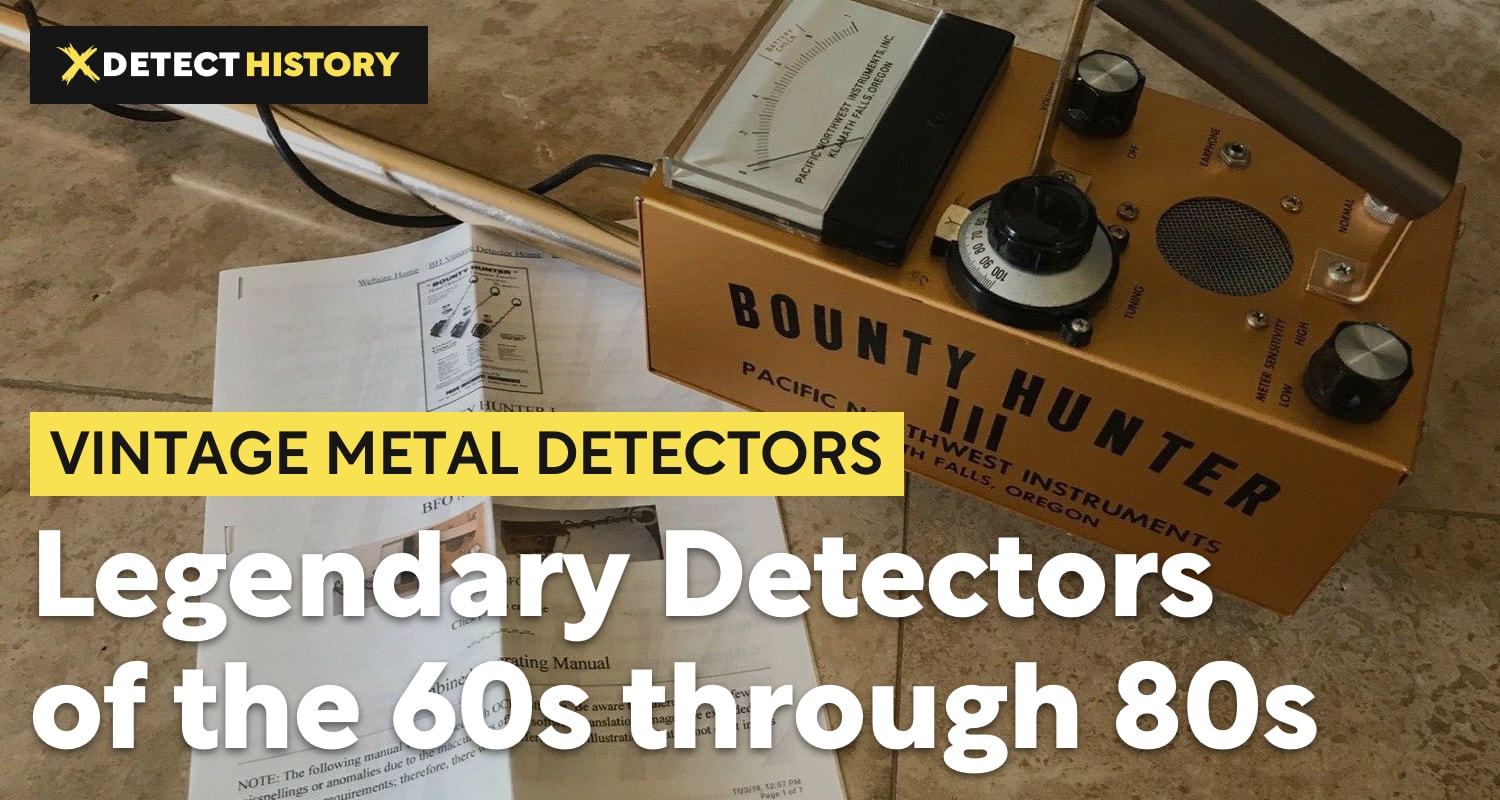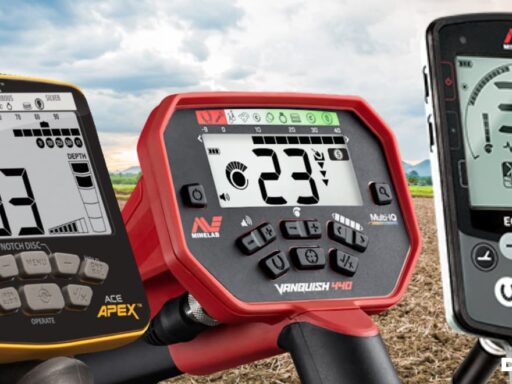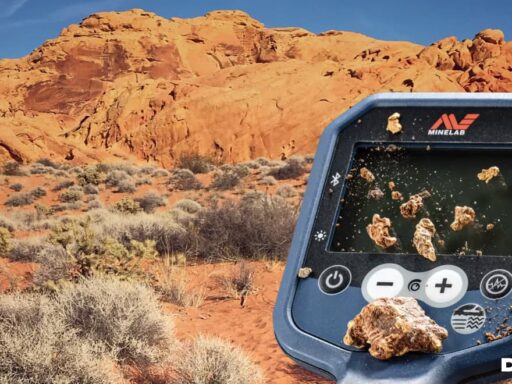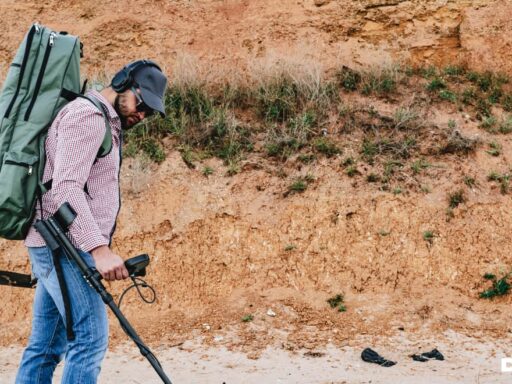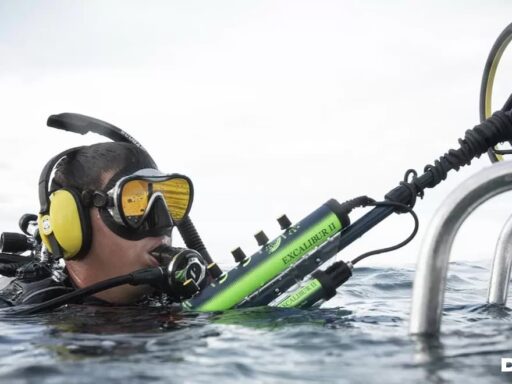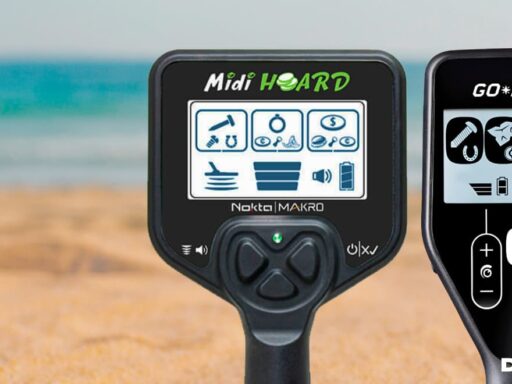Modern hobby metal detectors can be honestly called quite advanced pieces of technology. Many companies make really high quality machines, invent and improve their technology on a regular basis. New metal detectors manufacturers enter the market – most with mixed results, of course, but the evolution of the niche is obvious.
However, metal detecting as an activity pursued not only for industrial purposes, but also for small searches and hobby/recreation already has a long story of many decades, when such things as updatable software just did not exist as class. However, some treasure hunters know that their grandpas and fathers were metal detectorists! So, what machines did they use? I mean, except this universal two-forked branch technology?
In fact, the history of vintage metal detectors is fun and educational – but more fun, of course, because now, looking back at those out of the Ark technologies, one usually wonders how people even managed to find anything at all except things sticking right out of the dirt.
How The First Metal Detectors Were Invented?
The first attempts to create a metal detector began in the 1800s, after electricity was invented. Roughly at the same time, the California Gold Rush began, and people were dreaming of a machine that would help them find more gold faster and easier. Many scientists experimented with the electric fields, but nothing worked.
The first successful attempt to make something that would resemble a working metal detector was made by Alexander Graham Bell, and it has nothing to do with gold, but to save President Garfield’s life after he was shot. Unfortunately, Garfield could not be saved, but Bell has eventually created a prototype of a metal detector that became the basis for other people’s further experiments. The first applicable machines were created; they were huge, bulky, and were used mostly to locate and clear landmines.
Meanwhile, another scientist, Gerhard Fisher, was working with radio beams and navigation technologies; during one of his researches, he noticed that certain types of land give electromagnetic interference when he sends radio beams there. Fisher discovered these are highly mineralized patches of soil, and suggested he could use that discovery to create a metal detector. In 1925, Fisher received a patent on the very first portable metal detector, and became one of the very first manufacturers of portable hand metal detectors in the world. He sold his first machine to the public in 1931.
Meanwhile, another great inventor was following the path, exploring and improving previously created technologies. Charles Garrett, electrical engineer, started to pursue the hobby of detecting in the 1960s, and being unhappy with machines available on the market, he created his own machine, plus several search coils. Garrett’s move caused a revolution in the niche, and pushed it towards development to evolve into something we know today.
What Were the Key Features of the First Metal Detectors?
The very first metal detecting devices were very different, because the manufacturers used to experiment even with the simplest aspects – for example, turning the control box down on the shaft to face the user’s knees, or mounting it on the hip, or making a handle instead of an armrest, and so on. Technologies differed, too. However, there were some common features – Audio Volume tuning, Discrimination segments (some had more, some had less), Sensitivity tuning, and even primitive Ground Balance.
Another very interesting feature is that they were very primitive from our point of view, but they were state of the art at their time and as a result, these were really expensive pieces of technology. An affordable metal detector was almost impossible. Also, most metal detectors were created for coin shooting, or gold prospecting. There were no underwater machines (some were weatherproof though), and the detectors were less segmented depending on the type of location or target.
What Companies Were the First to Make Metal Detectors?
Obviously, considering the history of creating portable metal detectors, the very first companies that started making them for the public (meaning not those machines for industrial search) were Fisher and Garrett. Afterward, another company, one of the oldest in the world, followed – White’s Electronics.
Later, other three companies, smaller and less innovative, but still strong, entered the market – Tesoro, Technetics, and Bounty Hunter.
Garrett Vintage Metal Detectors
Garrett as a company was established by Eleanor and Charles Garrett on April 1, 1964, as a family business. Being one of the very first in the niche, in 4 years, Garrett had over 30 competitor manufacturers, however, in 1968, Charles was the first who managed to remove the oscillator drift and revolutionize the niche with his unique search coils. After that revolution, most competitors simply closed their doors, while Garrett continued to innovate, invent, and improve. Below, you can learn more about their top 3 vintage metal detectors.
Garrett Fortune Hunter VLF
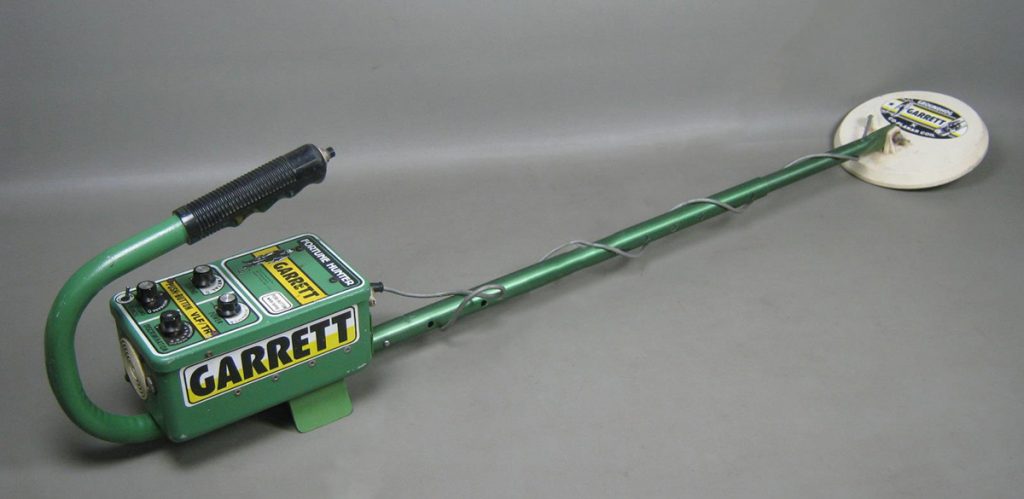
Being an innovator, Garrett started to work on the Very Low-Frequency technology and ground mineral cancellation discrimination technology, in 1976. It was Garrett’s team that coined the term Very Low Frequency – VLF – both terms and technology used today. In 1977, the company released Fortune Hunter, with VLF, push-button tuning function, and adjustable discrimination feature. It was a twin-circuit coin vintage Garrett metal detector that cost $149 in 1977; today, the price would be around $650.
Garrett Master Hunter ADS II
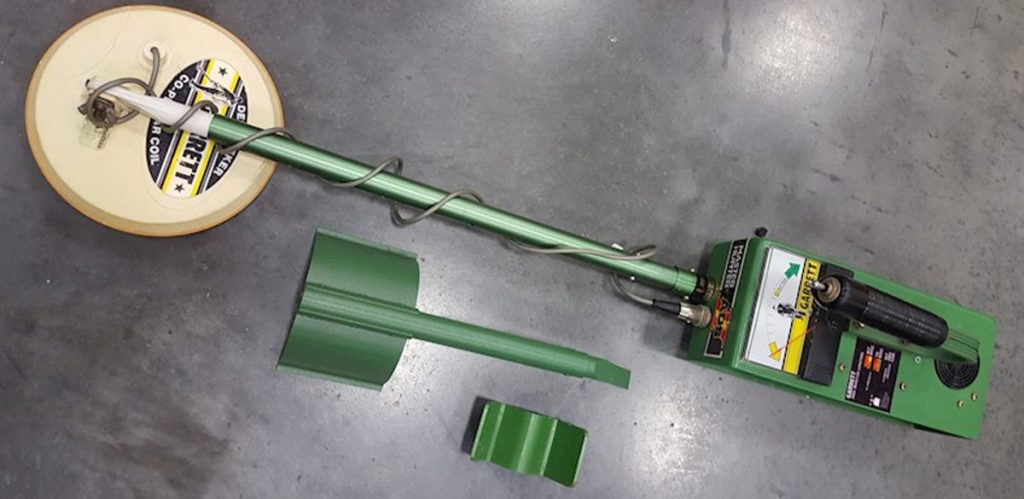
Master Hunter ADS II was one of the machines from the Master Hunter lineage introduced in 1973. The technology behind Master Hunter was Transmitter-Receiver. ADS II model included: power and sensitivity knob, tone and audio control, ground cancellation and discrimination features, four modes (reminding something we would call search modes now).
Garrett Treasure ACE 200
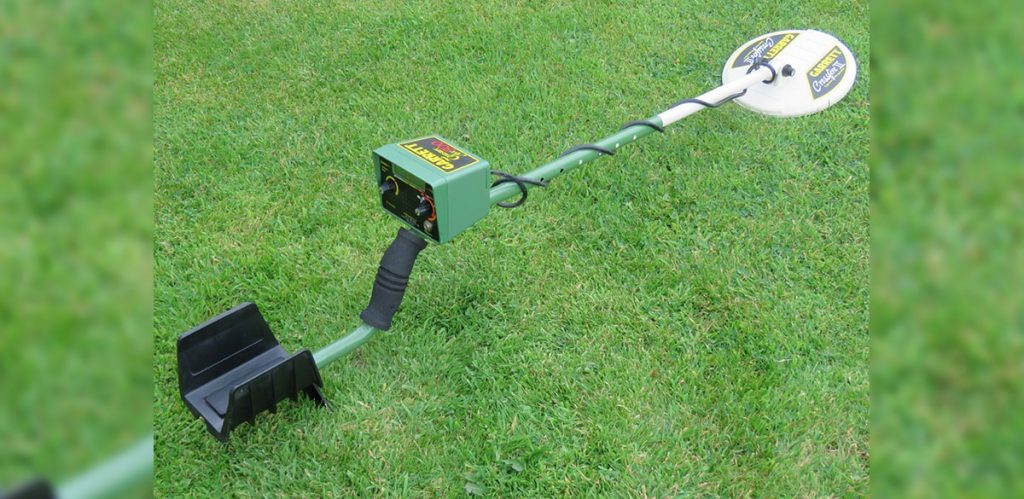
Treasure ACE series was the prototype of modern Garrett ACE 200, 300, and 300 machines, some of the most popular metal detectors by Garrett, and some of the most popular detectors in the hobby detecting niche in general. Treasure ACE 200 in particular was one of the most in-demand machines, since it included full-range target discrimination, exclusive TreasureEye pinpointing feature, and adjustable sensitivity.
White’s Vintage Metal Detectors
White’s Electronics, another major player in the early hobby metal detecting arena, was established in the 1950s and run by Kenneth and Olive White as a family business. They started from attempts to improve the then-existing Geiger Counters with headphones, and eventually grew into a worldwide famous manufacturer. The company held numerous patents for useful technologies, and White’s detectors were among the best. Below you can learn more about their top three vintage machines.
White’s Coinmaster 6000/D Series 2
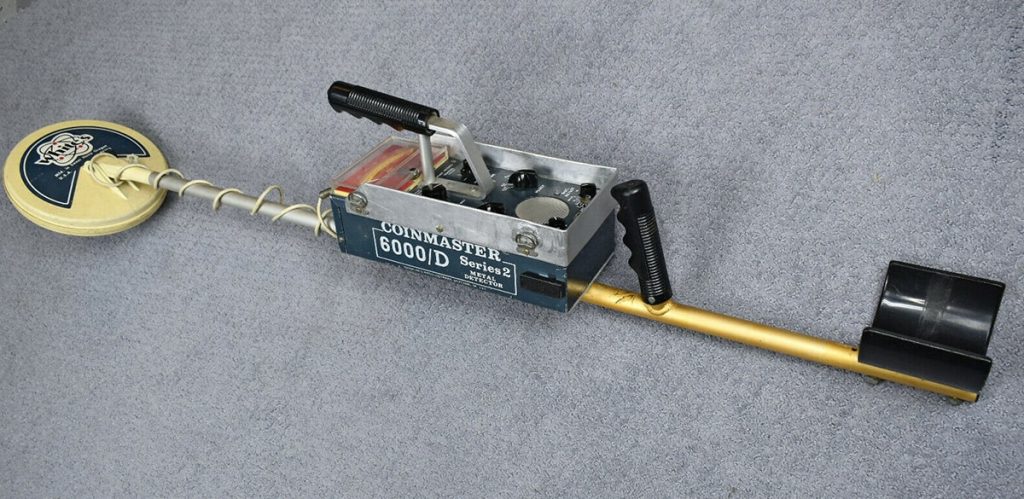
This machine cost $500 when it was released in 1980-1981. Coinmaster vintage metal detector had a waterproof coil (most probably weatherproof mostly), four search modes, discrimination feature, discrimination and volume control, removable coil and rod, and rechargeable battery. At the time of release, this machine was the deepest reaching vintage metal detector on the market. Today, its cost would be equivalent to about $1,355.
White’s Gold Master GMS63
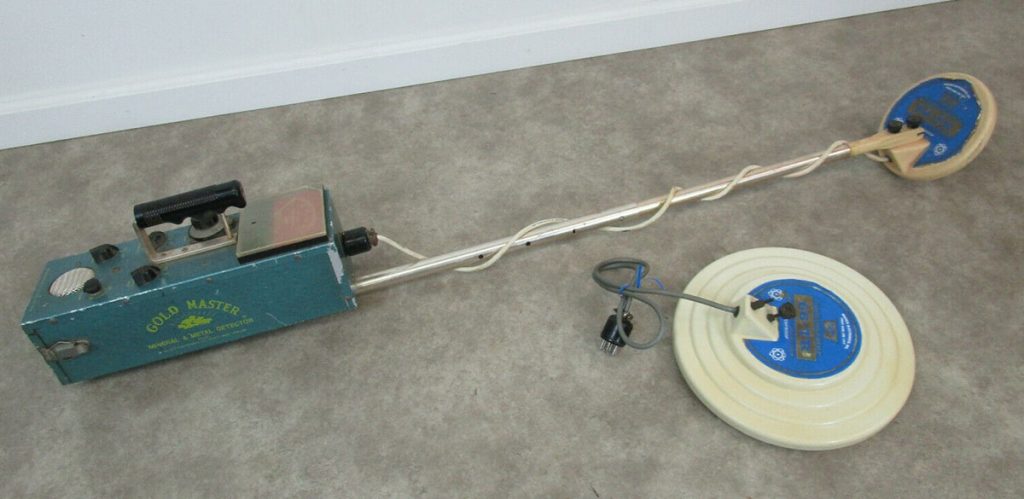
Gold Master GMS63 was released in 1964, as one of the first metal detectors specifically for hobby-level gold prospecting. This vintage Whites metal detector allowed a rechargeable battery as an option, audio control, discrimination control, ground balance tracking, and headphones in the kit. Due to this set of advanced and highly controllable features, Gold Master GMS63 was versatile in its performance and pretty efficient for gold prospecting.
Whites Coinmaster TR
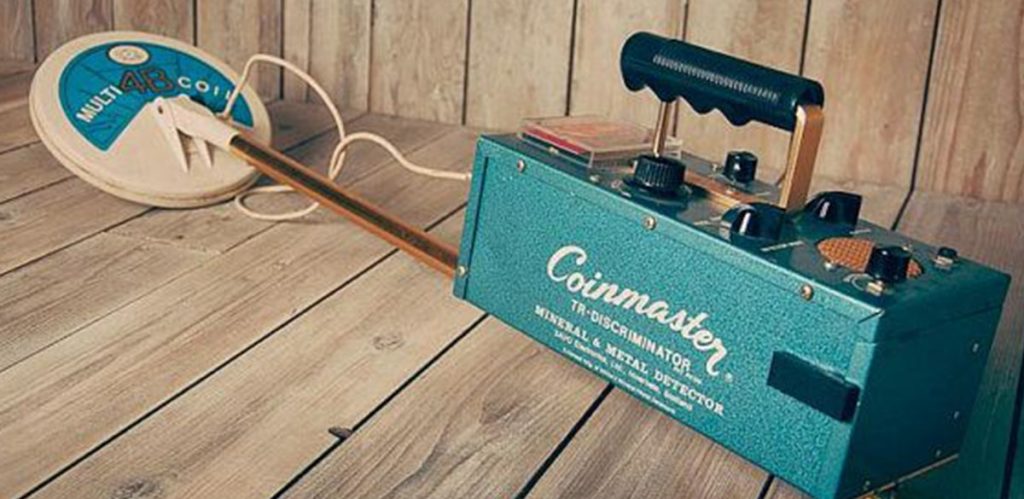
This Coinmaster TR best vintage metal detector was released in 1972. It was equipped with Volume and Discrimination control, Metal-0-Mineral sensitivity adjustment feature, removable coil, and batteries. The main purpose of this vintage Coinmaster metal detector, as it becomes obvious from its name, was to spot coins, however, White’s Electronics stated in the instruction that Coinmaster TR was also good for general exploration, and to a limited degree, even for small-scale prospecting.
Fisher Vintage Metal Detectors
One of the first metal detector manufacturers, Fisher Research Labs, was founded in 1931 by Gerhard Fisher, engineer and inventor, who managed to receive the first patent for a handheld metal detector, called Metallascope. In 1961, Fisher started larger production and began to sell hobby metal detectors to the public. Gerhard Fisher revolutionized the industry, and the company he created pioneered the niche for long years. Below, you can learn more about the top three vintage detectors by Fisher Research Labs.
Fisher VLF 552-D
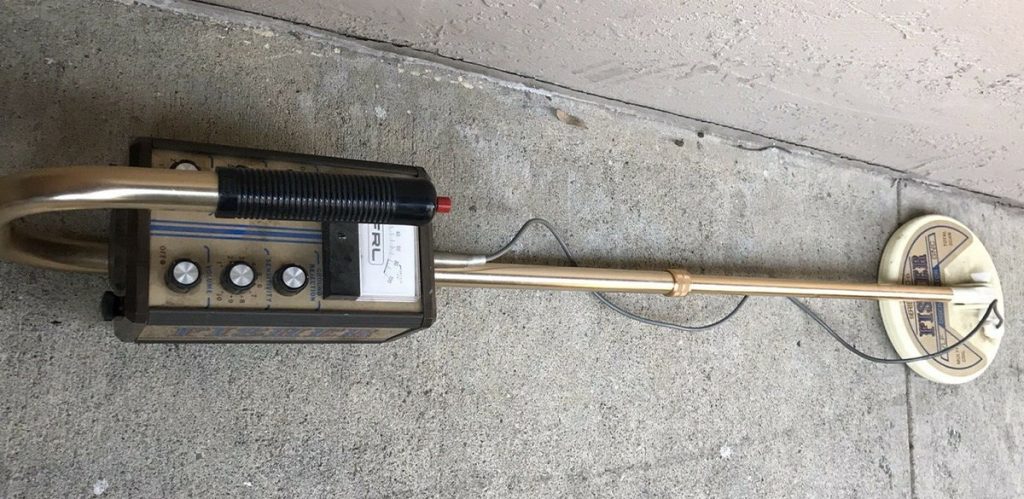
Fisher VLF 552-D was one of the oldest, the very first handheld metal detecting devices that could be used for hobby detecting. The vintage Fisher metal detector was equipped with the following features and functions: adjustable discrimination level, tuning control, sensitivity adjustment, with the operating frequency of 4.5 kHz. The machine had two modes – All Metal and Discrimination.
Fisher M-Scope
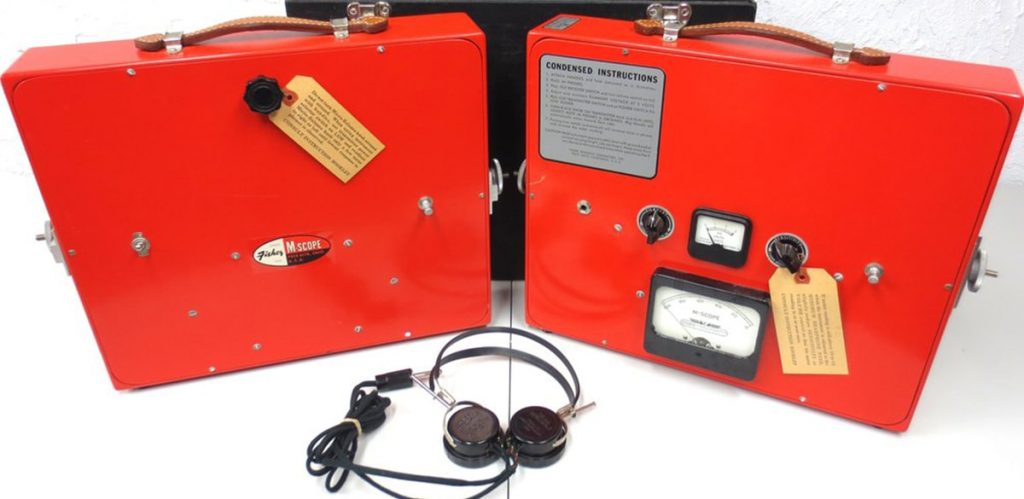
M-Scope was a shorter nickname for Metallascope, the very first usable machine created by Fisher Labs in 1936. M-Scope became a standard for all metal detecting industries and purposes, from geology to plumbing to prospecting. It was a primitive machine if compared to modern ones, of course, or even if compared to the first metal detectors by the Garrett company that started later and on the basis of Fisher (so to say). However, at the time, this box with a walking stick probe was on the edge of technological evolution. The machine was equipped with a meter scale from 0 to 100, and two controls – on/off and audio volume control.
Fisher Orion 120 M-Scope
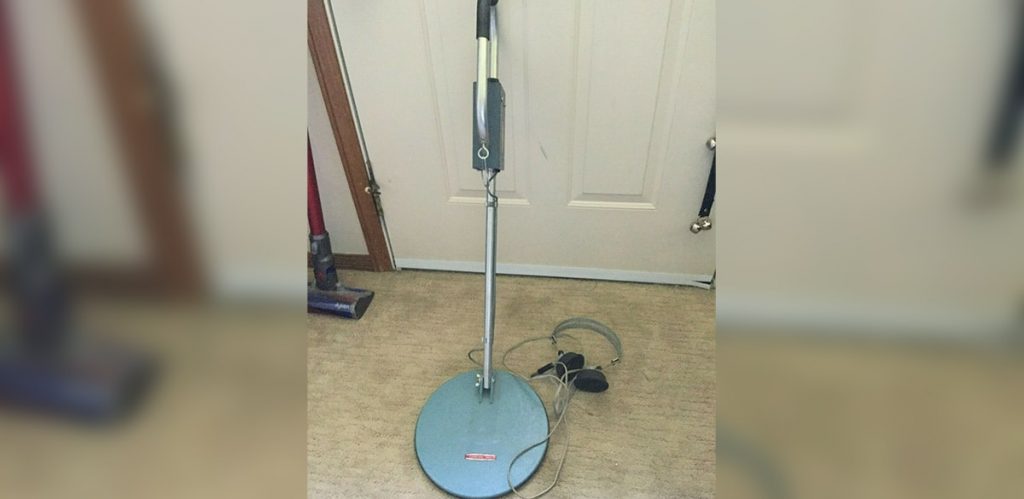
Funny that, for reasons unknown, or perhaps due to lack of imagination, or because they had no competitors for a while and did not think of the need to have unique names, Fisher Labs added the M-Scope name to many of their early machines. Orion 120 was not an exception; this vintage machine was powered by a 9V battery, had a large coil, and was switched on by plugging the rod into the control box. Basically, the only adjustable tuning was available for audio volume, plus, there were headphones in the kit.
Bounty Hunter Vintage Metal Detectors
Bounty Hunter is one of the really popular American brands of hobby metal detectors. The company was established back in 1973, and started its way mostly as a compatible accessories manufacturer. Then, in the 1980s, the company got a patent on an innovative technology called Target ID. Today, this technology is used widely in the niche. In the 1990s, the company was quickly purchased by a huge umbrella company, First Texas Product, and shifted its main focus to beginner level metal detectors and night vision devices. Bounty Hunter is still known and loved today as one of the true American brands.
Bounty Hunter III
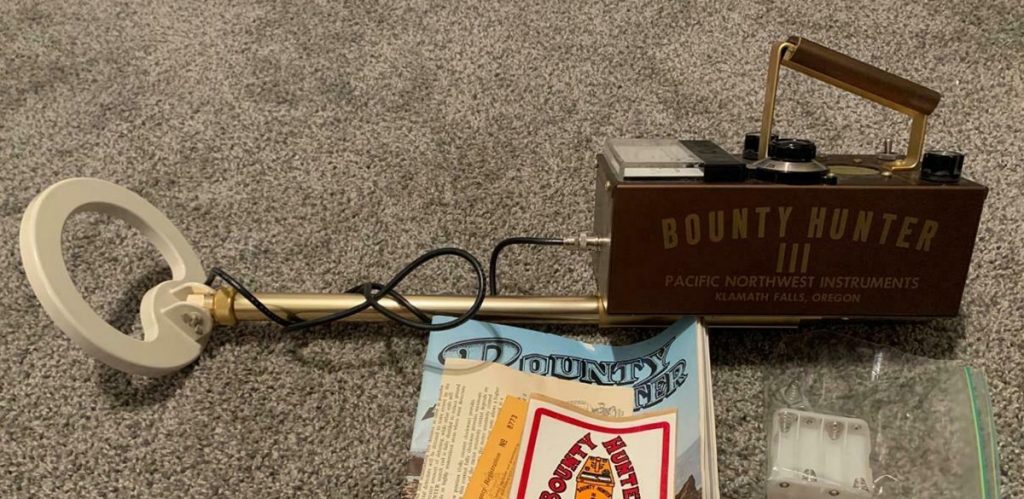
One of the very first devices released by Bounty Hunter, Bounty Hunter III is the most advanced model in the vintage lineage. It has adjustable shaft length, 4 ½ inches detecting meter for indications, powerful speaker and headphones jack, and audio volume control. The machine is said to be weatherproof, with coil compatible with Bounty Hunters I and II, and pretty lightweight. It has a surprisingly handy design, despite a huge control box with on/off switch, sensitivity tuning, and metal/mineral discrimination knobs. Bounty Hunter company gave lifetime warranty for this metal detector.
Bounty Hunter Maverick
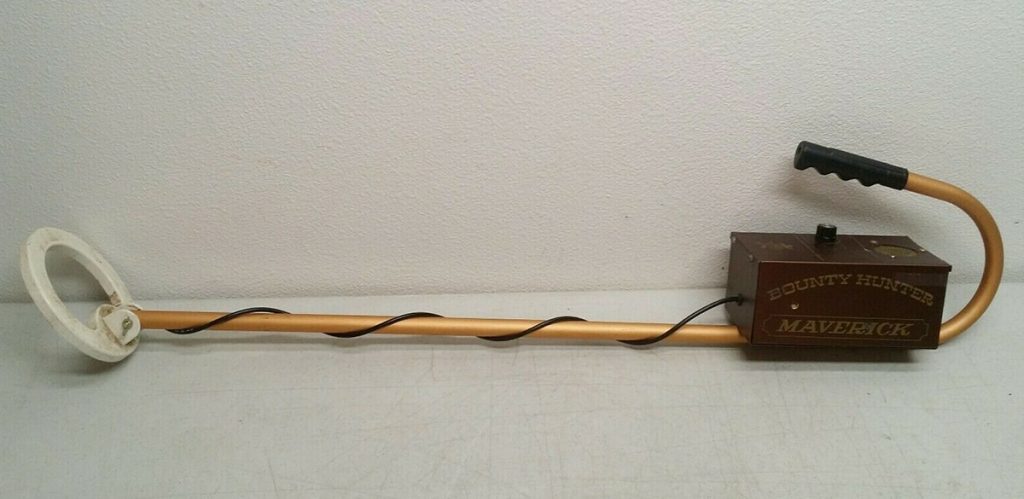
Created in the 1970s, the Maverick model is equipped with a very uncomfortable handle without an armrest, a big bulky control box, and a rather primitive coil. The knob on the control box provided switch on and off, and audio volume tuning. Of course, no headphones, only speakers, and the coil was not removable. Unfortunately, there is little information about its features other than controls and design.
Bounty Hunter TR550-D
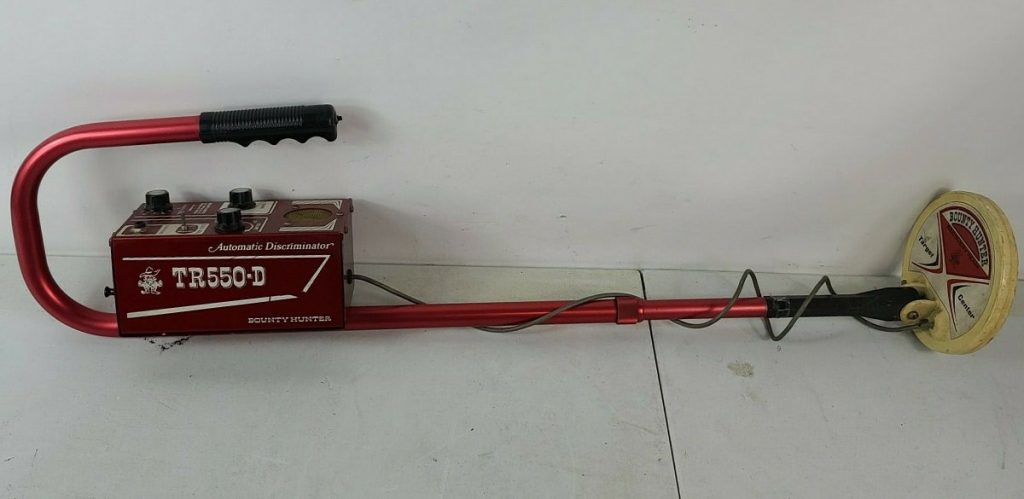
This machine, nicknamed Coinfinder, had a Volume control and Discrimination control knobs, the handle as uncomfortable as the earlier Maverick model, but it was already equipped with headphones in the kit. There were 10 levels of Discrimination, All metal and Discrimination search modes, and sensitivity tuning. In 1981, this machine cost $130, meaning that now the price would be almost $400.
Teknetics Vintage Metal Detectors
Teknetics started its way in 1983, and was one of those young American companies that wanted to compete with bigger manufacturers. Teknetics started strong, but very soon – already in 1989 – it was purchased by First Texas Product Corporation. Since then, the company has been backed by huge resources of the big corporation but failed to make any considerable innovations or breakthroughs, since every decision takes too much thinking and caution. However, Teknetics has been performing well during all these years, making metal detectors on a regular basis.
Teknetics 9000
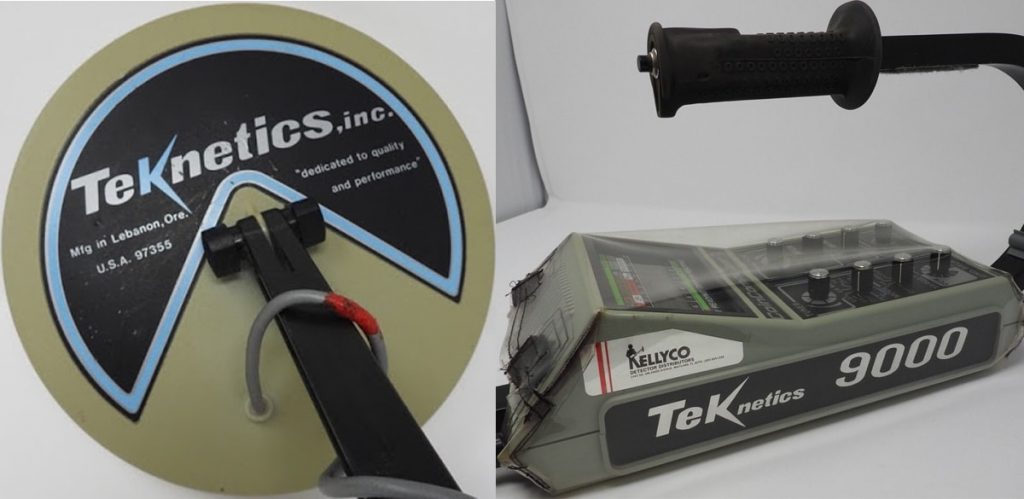
This model was called Coin Computer, and was released in the 1980s. Back then, it was a state of the art machine, with far more than one or two control knobs on the control box. It was equipped with a handle that resembled an old Bounty Hunter Maverick model, a small round coil, and a really advanced control box with an LCD identification. The control knobs allowed to tune the Discrimination, to choose the search mode, to set the desired target, and to tune the display. The Display provided coin reading, depth reading, type of metal, and so on. It was an XP Deus of the time.
Teknetics 8500
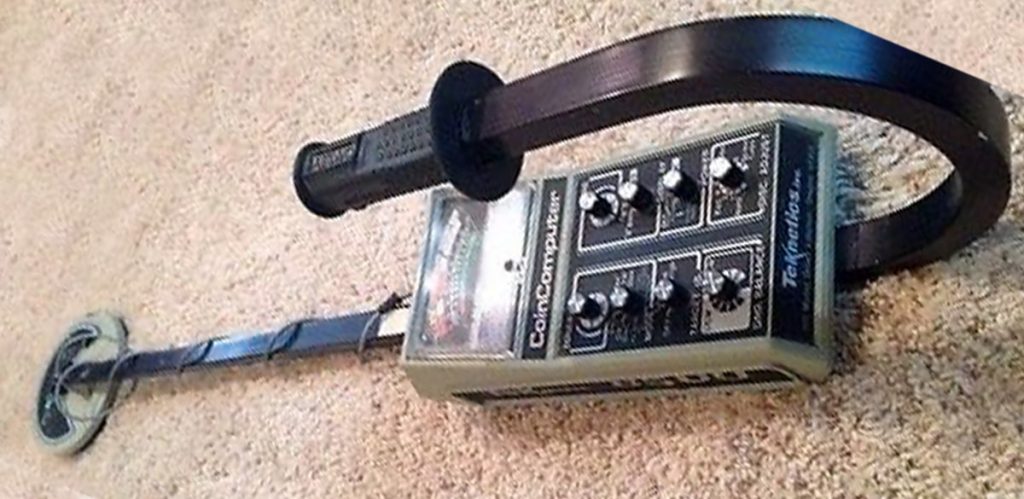
Another model for the 1980s Coin Computer, Teknetics 8500 had a small 8” concentric loop, 7 to 10 hours of battery life, headphones in the kit, improved depth, and refined discrimination. The company gave a 6 years warranty for this device, which is an impressive sign of reliability and smooth performance.
Teknetics Mark I Ltd
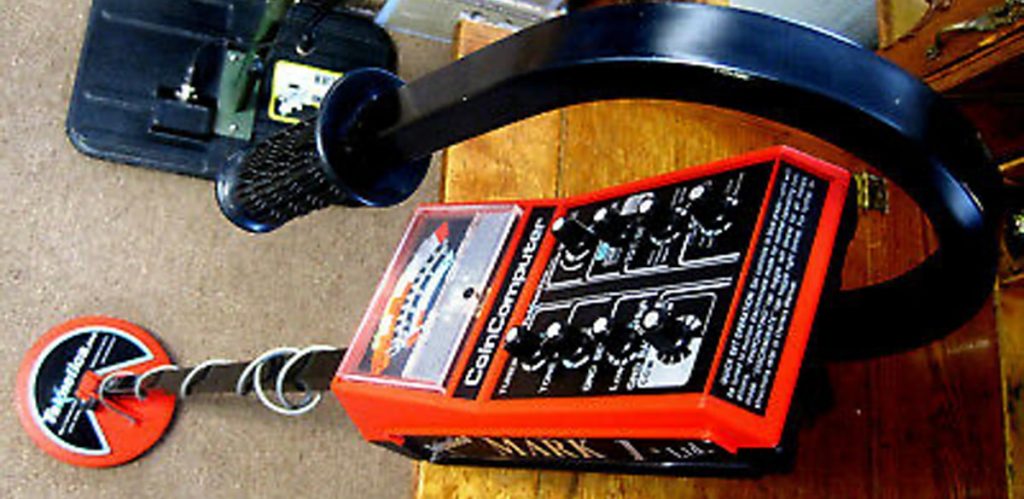
Mark I Ltd looks like a bit more modernized Teknetics 9000. It has an improved shaft and handle, and the search coil with coil cover look more solid. The machine has better functions though. There are ground balance and ground sensitivity tuning, volume, target selection tuning, and impressive discrimination. The operating frequency was 6.5 kHz.
Tesoro Vintage Metal Detectors
Tesoro Electronics Inc. was founded in 1980 in the US, like a small garage startup, by Jack Gifford who was an experienced engineer with previous experience of working for a metal detector manufacturer, Bounty Hunter. In 1981, Gifford’s strive for quality became so high that he was the first to issue lifetime warranties for his metal detectors. Also, metal detectors by Tesoro were among the lightest in the market.
Tesoro Toltec 100
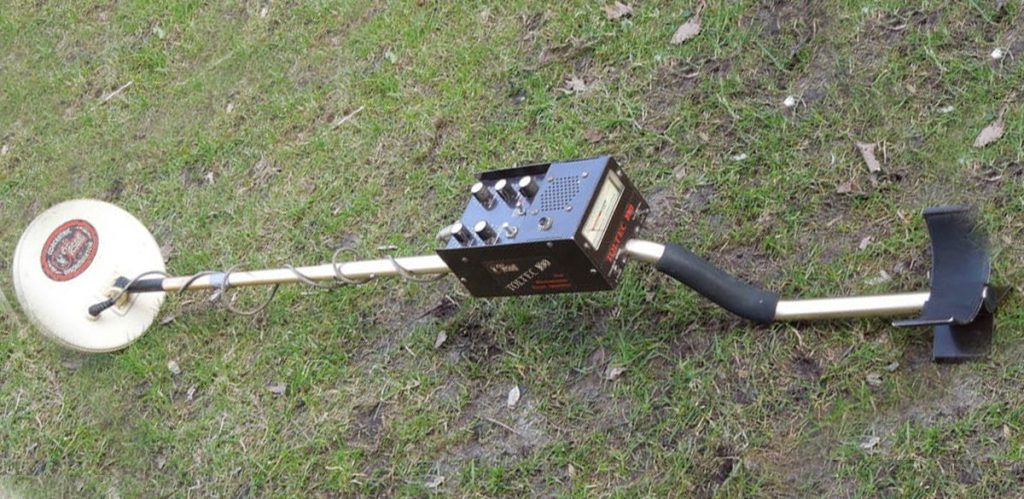
This very old model by Tesoro could boast a 12.5 kHz operating frequency, 8.5” search loop, and being compatible with all Tesoro accessories. There were two modes – All Metal and Discrimination, Automatic retuning, and Notch filter. In addition, the user got a lifetime warranty.
Tesoro Royal Sabre
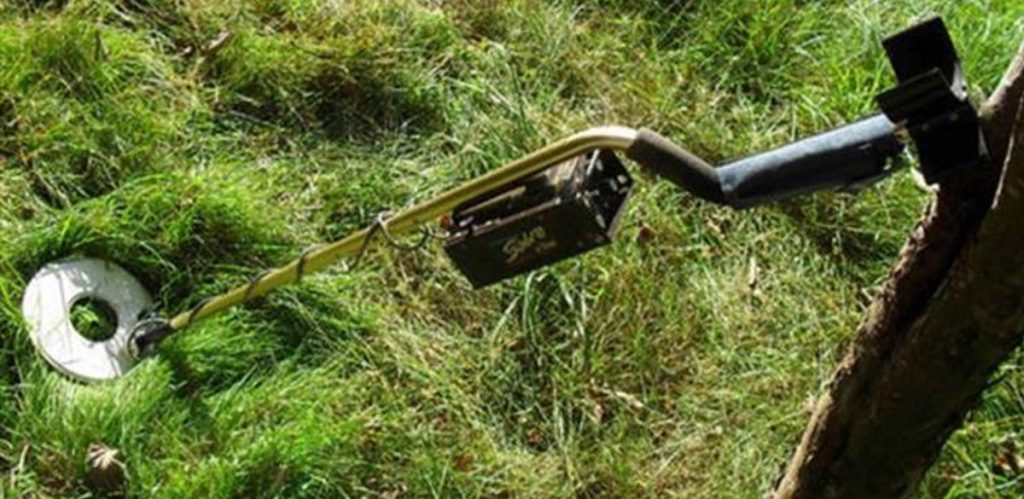
This metal detector vintage was equipped with Notch Tone Target ID, Notch Discrimination, Pinpoint mode, Silent Search Discrimination, was compatible with several search coils of different size, and had a truly luxurious looks, with a comfortable armrest, but control box uncomfortably turned down, facing the user’s knees. The Royal Sable model was next in the Sabre lineage by Tesoro.
Tesoro Bandido
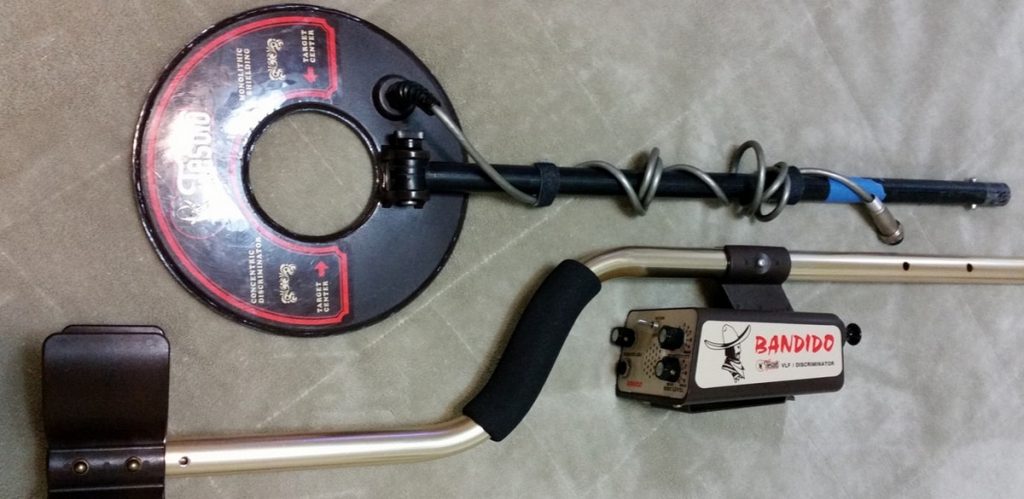
This model had a removable control box that could be worn as a hip mount. The machine was very lightweight, and weatherproof. The operating frequency of 10 kHz was complemented with profound Discrimination, Ground Balance, Sensitivity and Audio volume tuning, and battery life up to 30 hours. Bandido was quite expensive at the time of its release, but it also combined features other brands did not have.
